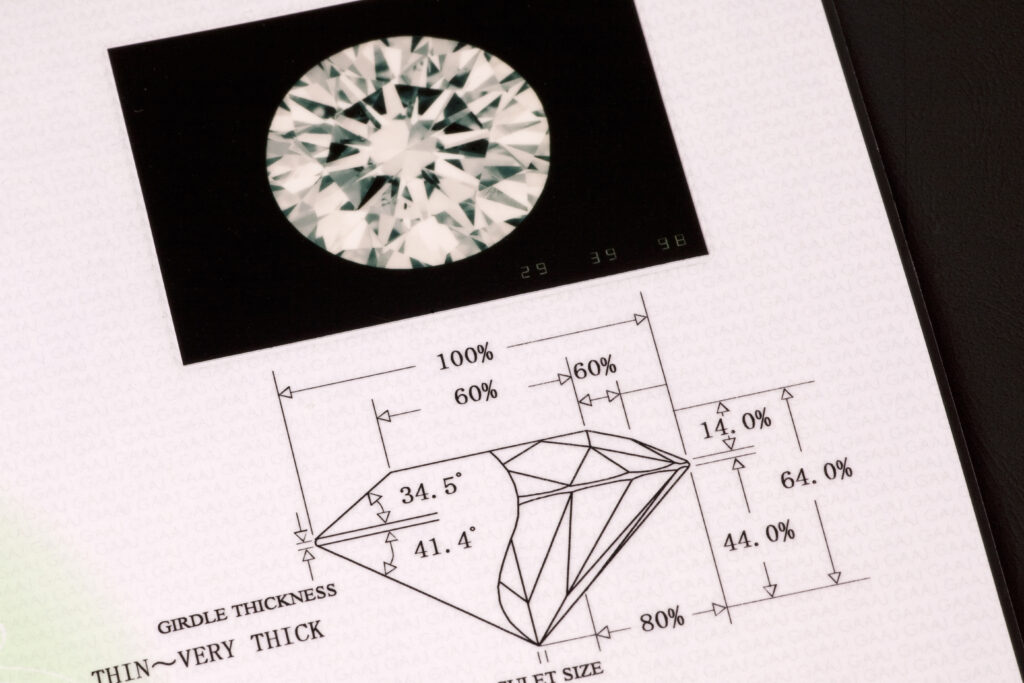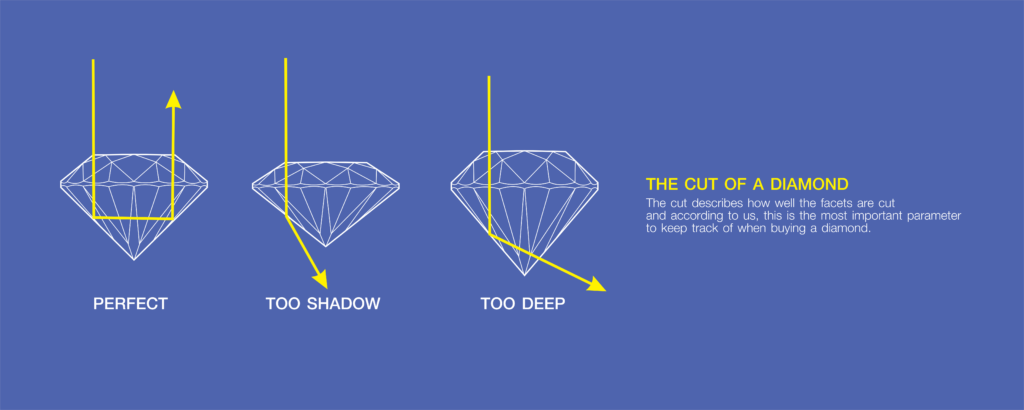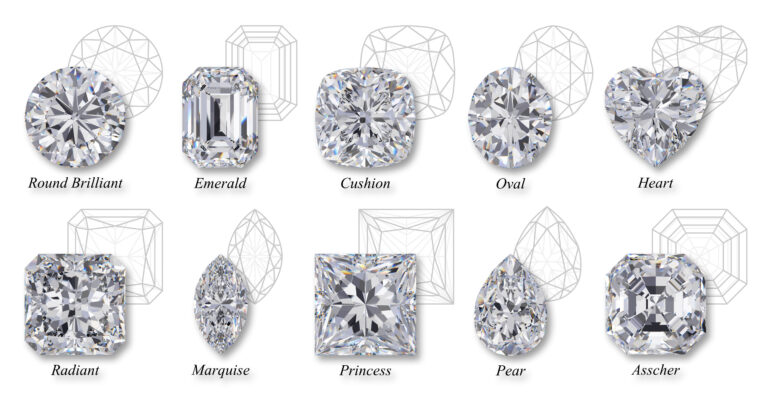
The cut of a diamond is equally as important as the clarity, colour and carat weight. The cut grade does not only describe the shape of the diamond, it has a direct correlation to how much the diamond shows brightness, fire, scintillation and colour. If the diamond is cut poorly, it can appear more or less sparkly, more or less saturated, it may even turn out quite dark and lose the adamantine shine of a it. You may ask yourself, what a good cut is and how to make it. To answer this question, you should know that the diamond’s proportions determine how the diamond interacts with light; thus, an excellent cut is one where the diamond’s proportions allow the diamond to show off its charm the most.

When the light hits the diamond, it is either absorbed or reflected by the diamond, and that is the effect you see when the diamond sparkles with white light and the spectral colours of the rainbow. When the light ray enters the diamond it bends and the speed of the light slows down. This light ray either reflects off the inside surfaces of the diamond or exits the diamond. The more internal reflection of the light is in the stone, the better the cut is considered to be. To make a diamond reflect the light to the eye, the cutter must cut the diamond in such a way that the light hits the critical angle in the stone, which is 24.5 degrees. The light can exit the gem only when it strikes inside the critical angle. Therefore, the ideal scenario is when the light ray enters the crown, hits the pavilion outside of (larger than) the critical angle of 24.5 (because then the light exits), reflects inside the pavilion to the opposite side outside of the critical angle as well, and only then strikes the crown (upper part of the diamond) inside the critical angle to exit the stone. In this case, the light can show off the maximum beauty of brightness and fire of the gem. If the diamond is very shallow or very deep then when the light hits the diamond, it enters through the table and exits through the pavilion, and does not add to the diamond’s scintillation and the face-up appearance.
A cutter’s job is not as simple as it may seem to be. He has to always keep in mind how the light interacts with the diamond. The cutter who cuts the diamond either by hand or by using the machine does not cut it based on the basic instructions, there are a range of proportion combinations, especially for the round brilliant cut that makes the diamond sparkle more.
When it comes to fancy cuts, the proportion variations are a bit trickier. To be a beautiful diamond, it should sparkle, show brightness and fire and overall have a pleasing appearance. However, when it comes to fancy shapes, the opinion on what is an attractive stone is quite subjective. In this case, the “beauty is in the eye of the beholder.” Thus, the cut grade is not assigned for fancy shapes. Simply because there are so many variations on each shape and each variation can be perceived as appealing by someone, but unalluring by someone else.
Cutting a fancy colour diamond could present a challenge for the cutter because a certain cut can decrease the saturation of the colour whereas the other cut can increase the saturation of the colour. In this case, it depends on whether the goal is to achieve the maximum colour concentration or to decrease the colour in the diamond. Based on it, the cutter will decide for which cut to go for.
As you may have realised by now, the cutting of a diamond involves a lengthy procedure of various steps and decisions a cutter has to make. When assigning a cut grade, a diamond grader analyses the proportions of the round brilliant shape and its interaction with the light.




